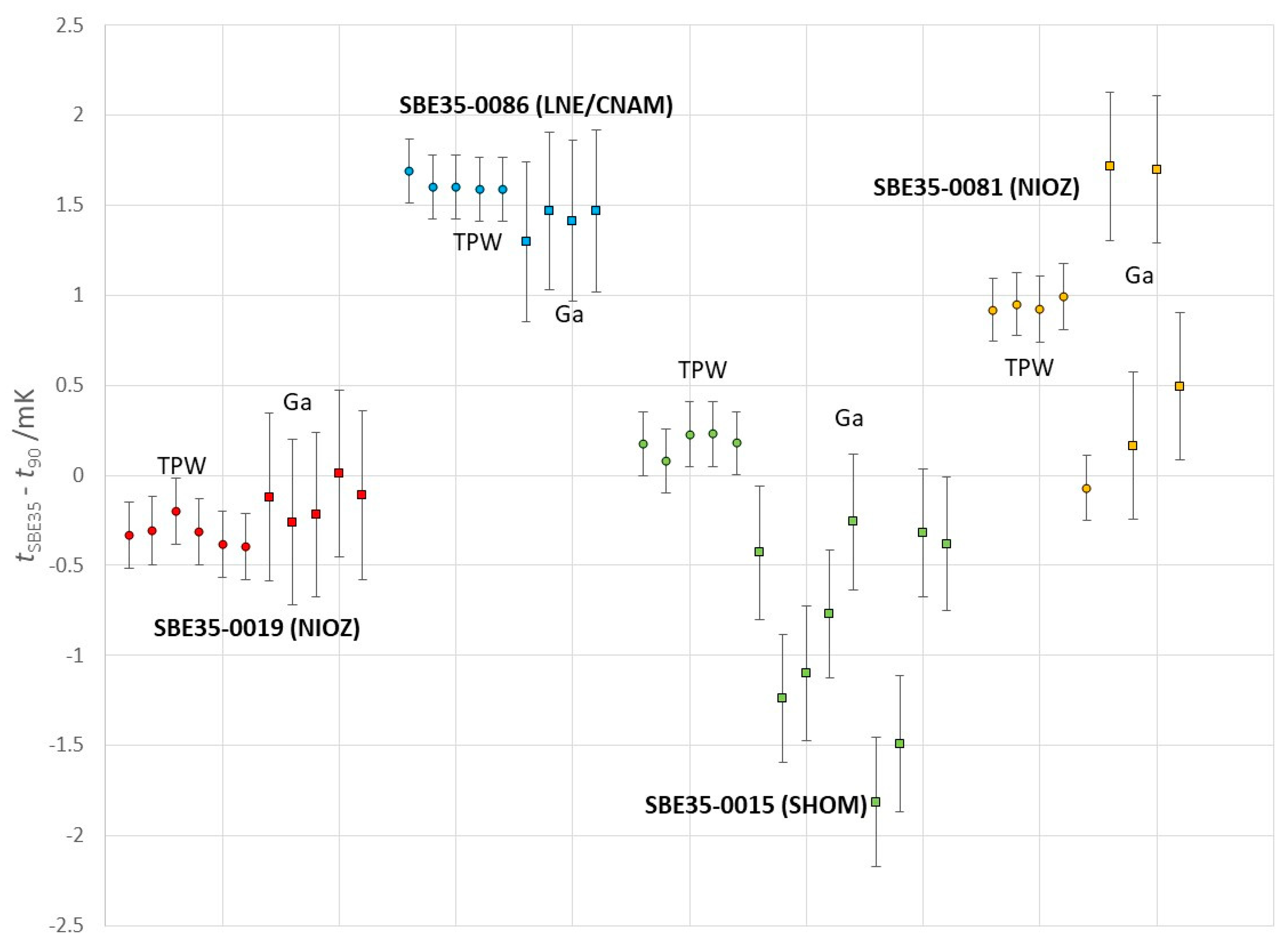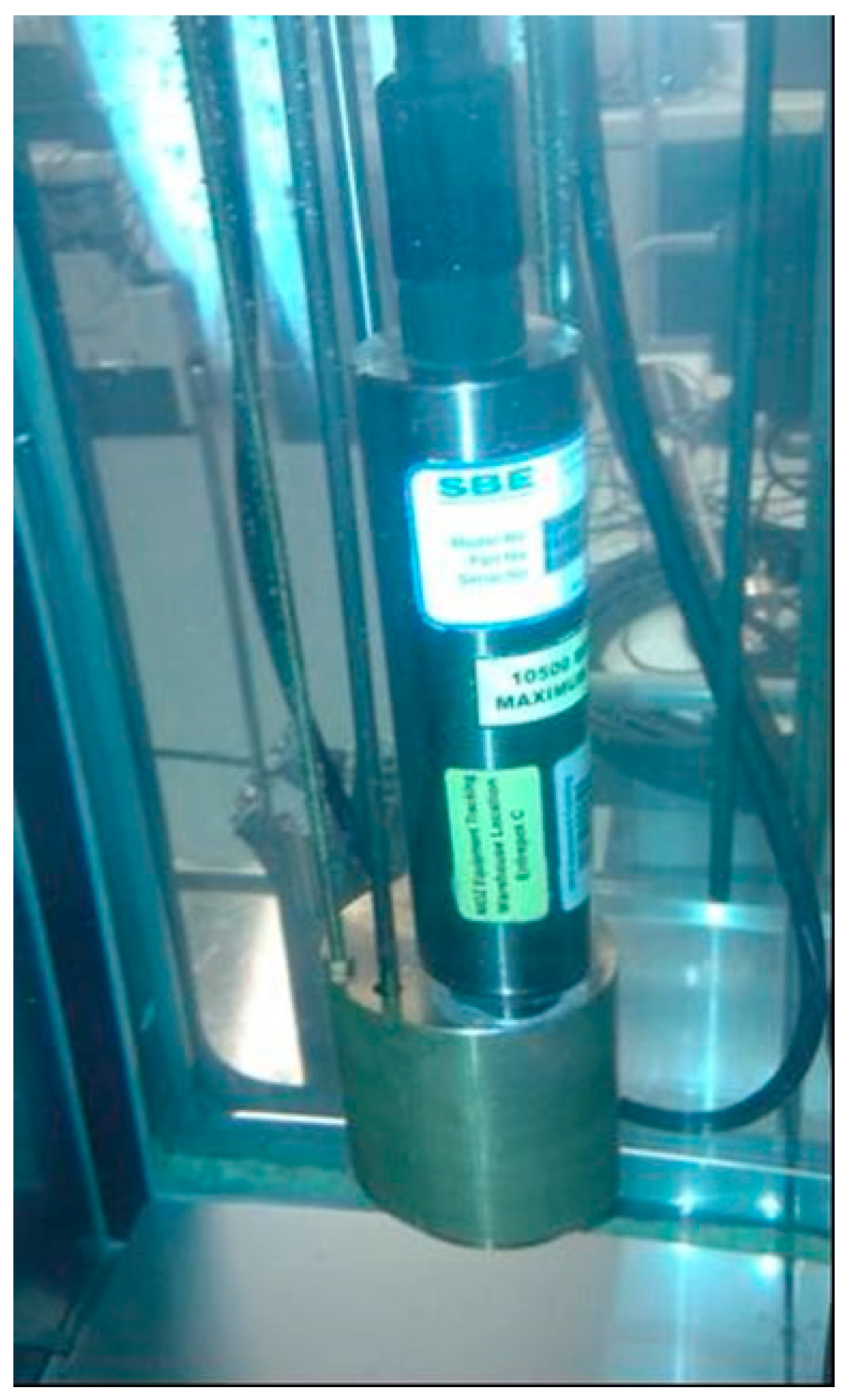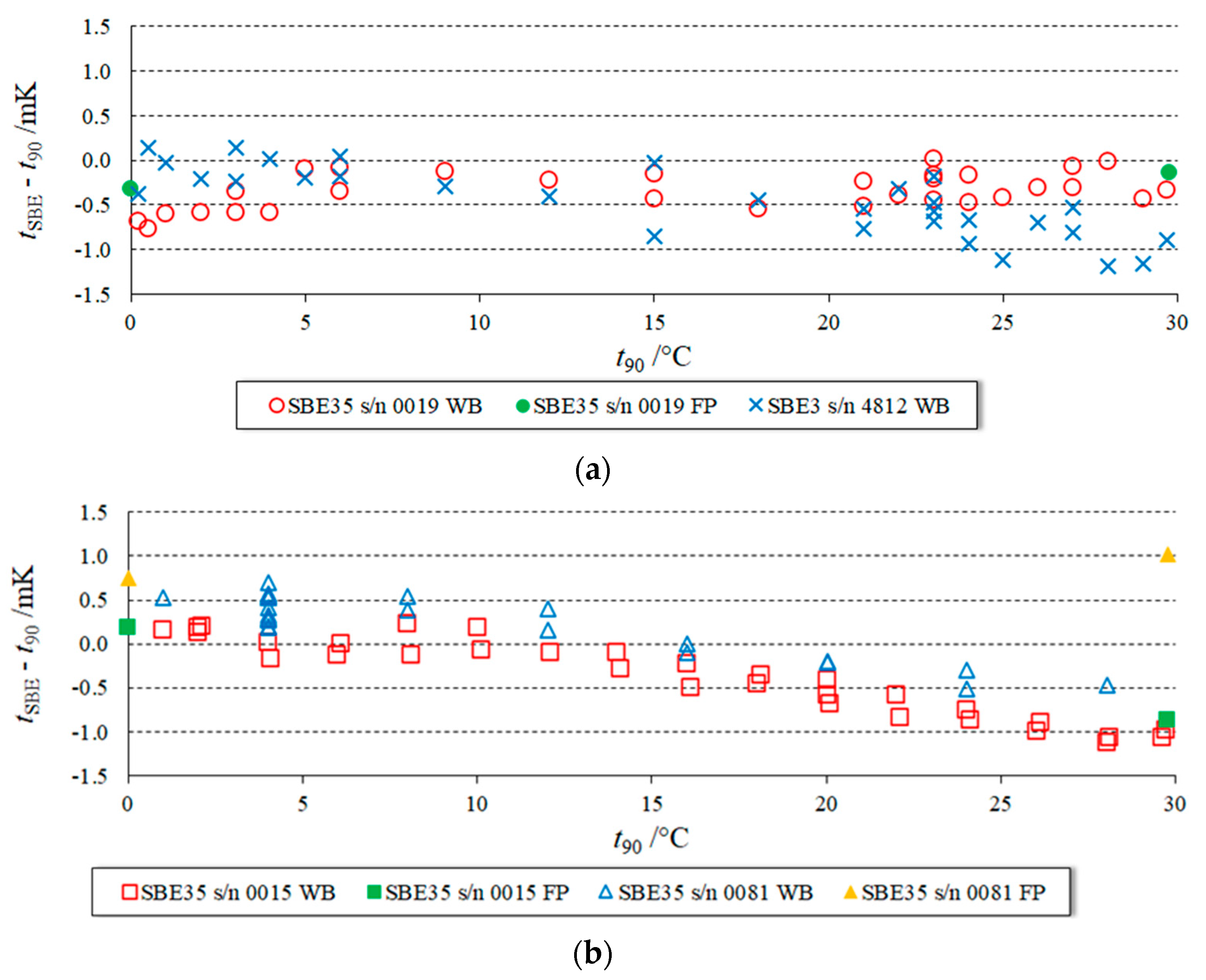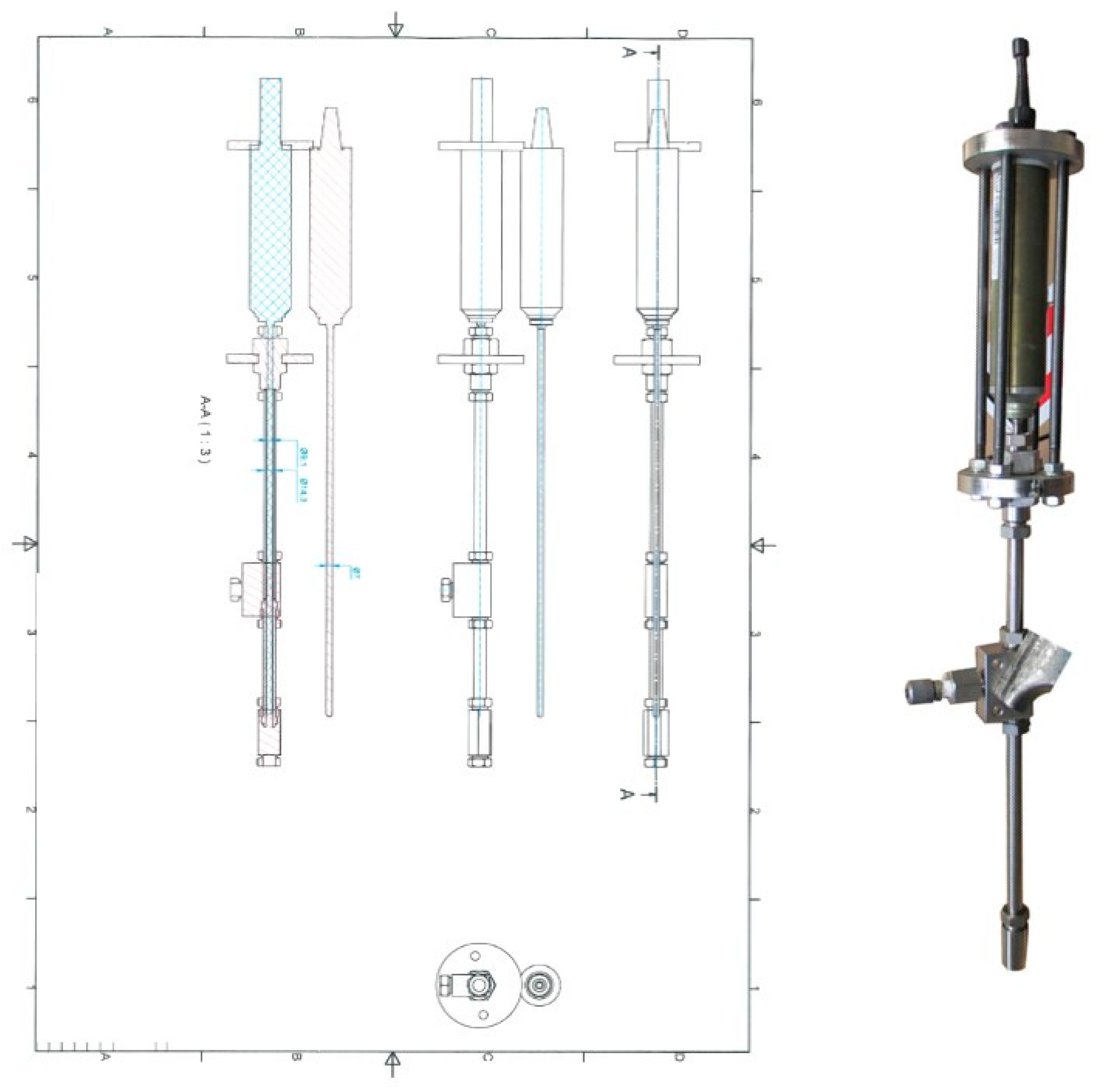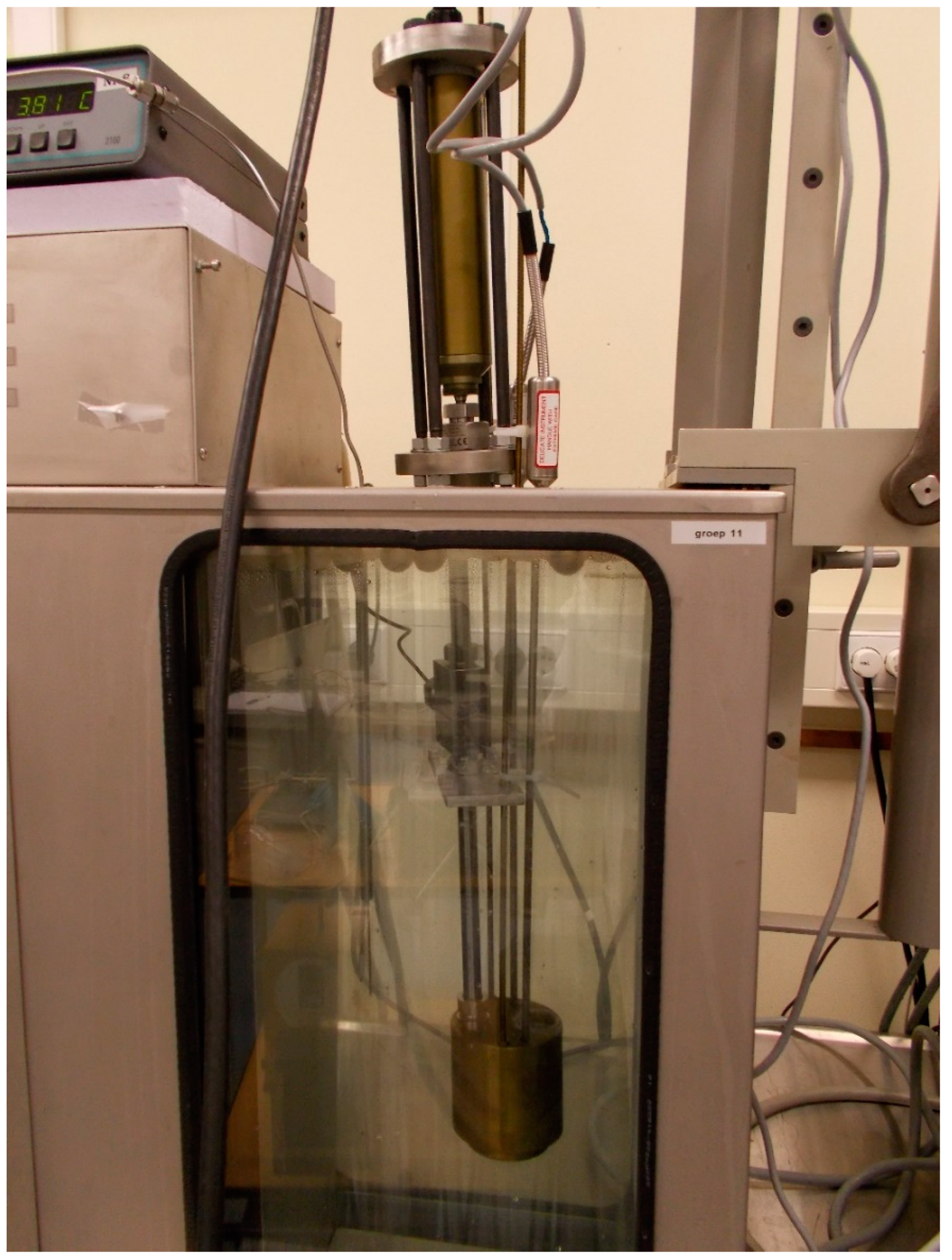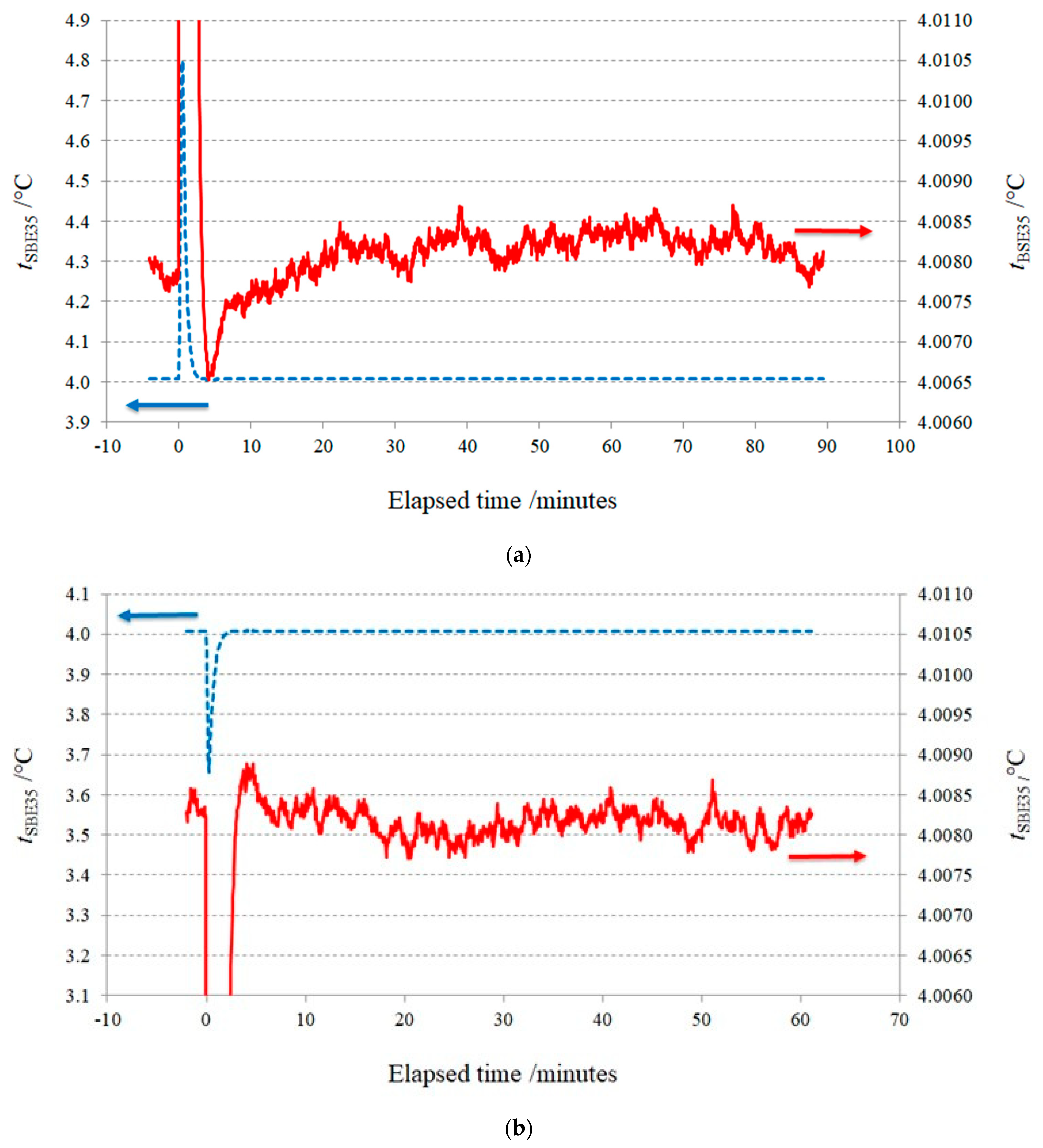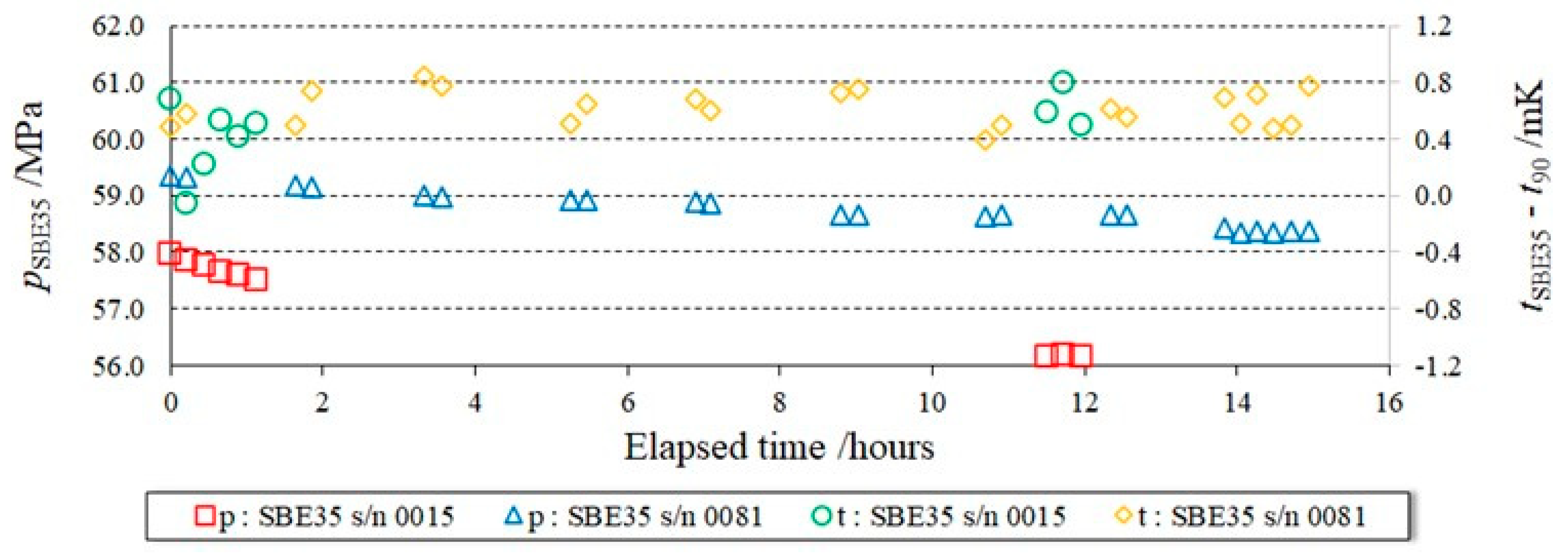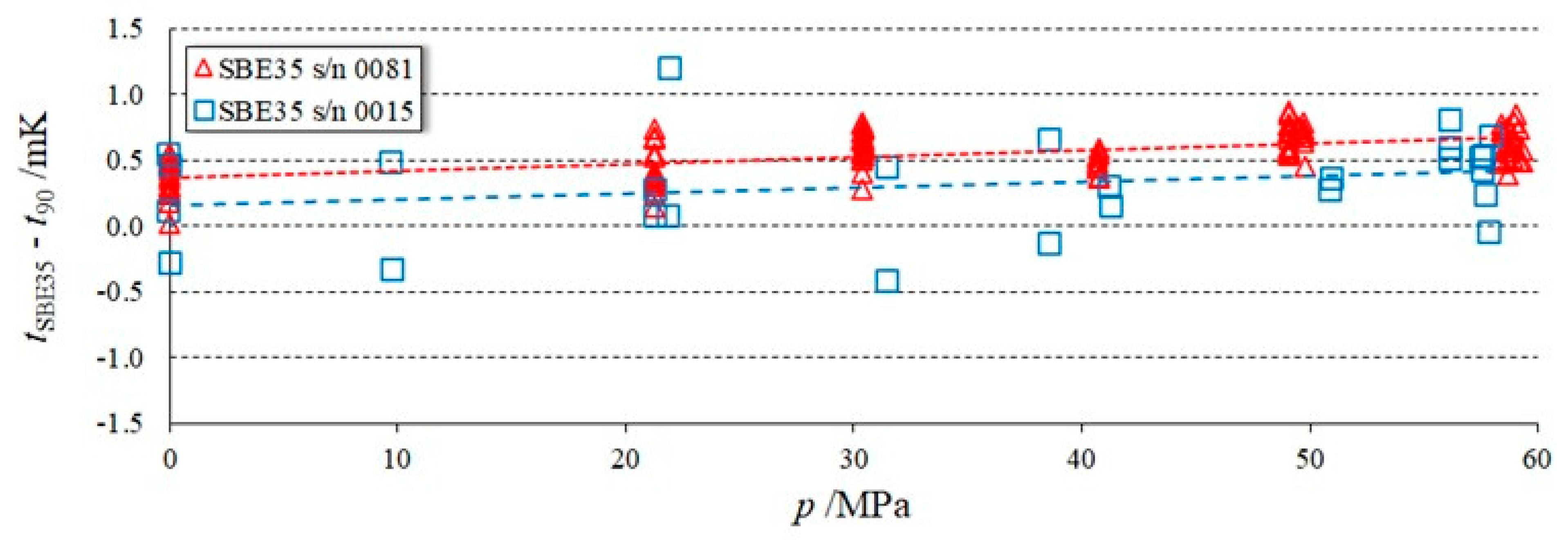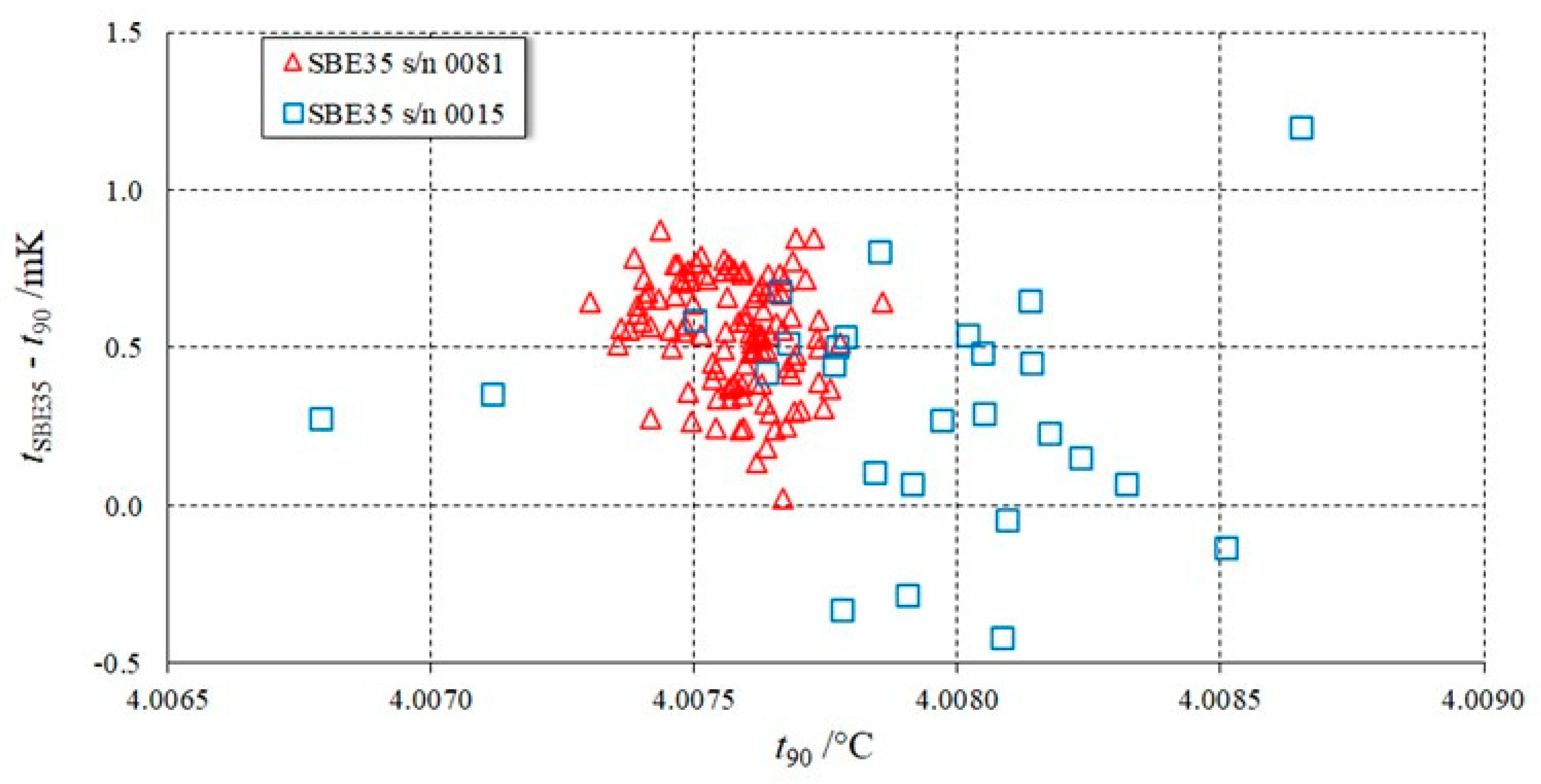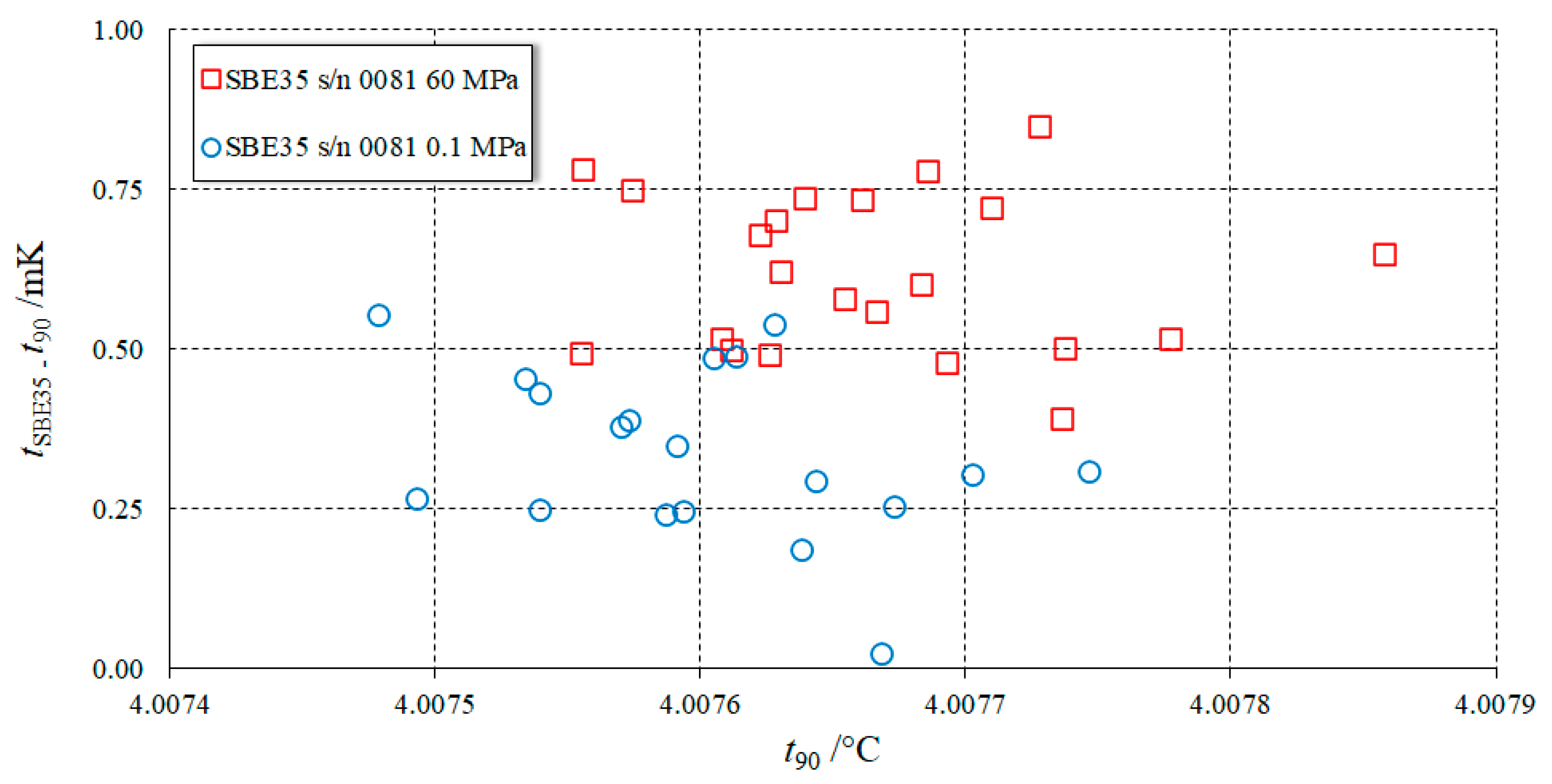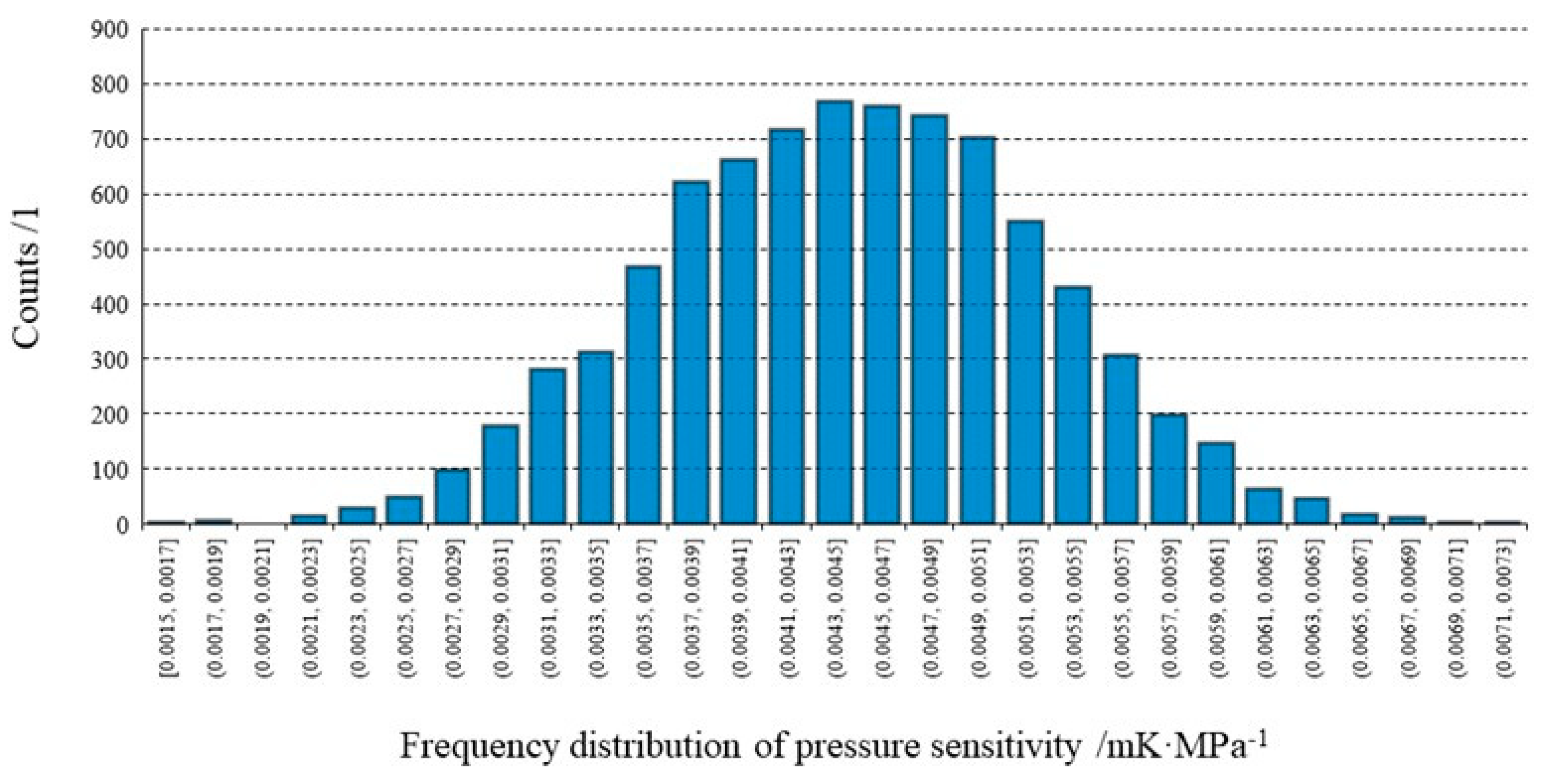1. Introduction
Global warming is driven by the current imbalance (Earth’s energy imbalance, EEI) at the top of the atmosphere, between the incoming solar energy and the outgoing energy radiated back to space [
1]. In the last decades, EEI became increasingly dominated by anthropogenic forcing (carbon dioxide and other greenhouse gases) [
2]. EEI is recognized as the most fundamental metric in assessing the current status of global warming and feeding long-term climate change predictions. As the excess energy, continuously added to the Earth system by EEI, is predominantly stored in the oceans (in the last 50 years, 89%, compared to the 1% stored in the atmosphere [
2]), the accuracy in the EEI estimate is related to the accuracy in the total ocean heat content (OHC), which in turn, is directly related to the accuracy of global ocean temperature observations.
Despite its crucial importance in quantifying global warming and in predicting the future climate evolution, the monitoring of deep-ocean temperature changes is hindered by the required level of accuracy in its measurement—the deep-ocean temperature measurements needed to maintain an accuracy of 1 mK over a decade [
3], in the harsh deep-ocean environment.
Current practice of accurate deep-ocean temperature measurements prescribes the combined use of two devices, which are regarded as de facto standards by the worldwide oceanographic community (see
Figure 1).
- -
SBE35 (Sea-Bird Scientific, formerly Sea-Bird Electronics) —reference thermistor thermometer with claimed 0.2 mK accuracy, 0.14 mK∙yr−1 stability and 0.5 s response time.
- -
SBE3 (Sea-Bird Scientific, formerly Sea-Bird Electronics)—CTD profiling thermistor thermometer with claimed 0.7 mK accuracy, 2 mK∙yr−1 stability, and 0.07 s response time.
When used in the deep ocean, the response of the SBE3 is affected by high pressure, resulting in a pressure effect of the order of a few mK at 6000 m (corresponding to approximately 60 MPa) depth, and is explained by the manufacturer as caused by the mechanical stress exerted on the sensor when the thermometer is compressed at high pressures. Such pressure dependence of the SBE3 is currently coped with using the so-called “in situ” calibration of the SBE3 relative to the SBE35 [
4], which involves the simultaneous deployment of both thermometers in the instrument frame (CTD), during a measurement campaign, and allows the determination of the pressure dependence of the SBE3 (−0.65 mK∙(60 MPa)
−1 to 2.24 mK∙(60 MPa)
−1, see [
5]), under the assumption that the SBE35 response is pressure-independent.
Unfortunately, an eventual pressure dependence of the SBE35 was never unequivocally ruled out. Uchida et al. [
6] obtained contradictory results, Peruzzi et al. [
7] obtained −6 mK∙(60 MPa)
−1 for only one individual SBE35 unit in an experiment in which temperature was not controlled and Joung et al. [
8] obtained a repeatable pressure dependence ≤1 mK∙(60 MPa)
−1 for 2 of the 3 investigated SBE35, and no pressure dependence, within the measurement uncertainty, for the other SBE35.
This paper provides an overview of a metrological evaluation conducted over the past 5 years, on several units of SBE35 and SBE3 ocean thermometers.
In
Section 2, we recall how these thermometers are calibrated by the manufacturer (
Section 2.1) and we report the results of (a) our re-calibration of 4 SBE35 units against the Dutch national reference fixed-point cells (triple point of water at 0.01 °C and melting point of gallium at 29.7646 °C), used to realize the International Temperature Scale of 1990, ITS-90 [
9] (
Section 2.2), and (b) our recalibration of 3 SBE35 units and 1 SBE3 unit, in comparison to the reference ITS-90 Standard Platinum Resistance Thermometers (SPRTs) in a water bath in the temperature range of 0 °C to 30 °C (
Section 2.3).
In
Section 3, we present the experimental set-up, the results, and the analysis of an experiment conducted to investigate the effect of high pressures (up to 60 MPa) on the response of two SBE35 units.
In
Section 4, we summarize the conclusions of our experimental investigation.
3. Pressure Dependence
Our first attempt to investigate the pressure dependence of the SBE35 is reported in [
8]. In this occasion, the measurements were performed in the mechanical workshop at NIOZ, Texel, the Netherlands, where an 80 MPa pressure chamber and several SBE35 and SBE3 units were made available (although, for safety considerations, we limited the pressure to a maximum of 60 MPa). The reference temperature was provided by an SPRT, traceable to the ITS-90, and an ASL F18 resistance ratio bridge, both transported to NIOZ. Unfortunately, some experimental conditions could not be optimized—the temperature of the water in the pressure chamber was not actively controlled (it was only left stabilizing overnight) and the electromagnetic environment of the resistance ratio bridge was not that typical of a primary thermometry laboratory (noisy and spiking, particularly when other machines were operated in the workshop).
At a later time, we decided to repeat the experiment in a thermometry laboratory. As no pressure chamber was available in the thermometry laboratory, a compact pressure enclosure for the SBE35 (see
Figure 6), which could be directly submersed in a commercial water bath and pressurized using an external dead-weight tester via a 1/8 inch stainless steel tube and a hydraulic liquid, was designed and realized by Minerva Metrology and Calibration, Amersfoort, the Netherlands.
In
Figure 7 a picture of the experimental set-up is shown—an SBE35, enclosed in the pressure chamber, and two reference SPRTs are accommodated in a massive brass comparator block, all submersed in a commercial water bath. The pressure in the enclosure, generated by the external dead-weight tester, was measured with a calibrated pressure transmitter Druck that had a calibration uncertainty of 0.003 MPa.
As expected from thermodynamic considerations, the pressurization and de-pressurization of the pressure enclosure affected the temperature of the SBE35, due to the temperature change of the pressure-transmitting hydraulic liquid generated by the pressure change.
Figure 8 shows the time evolution of the temperature read by the SBE35 at and after pressurization (
Figure 8a) from atmospheric pressure to 50 MPa and at and after de-pressurization (
Figure 8b) from 50 MPa to 30 MPa. For a pressure increase of 50 MPa, the temperature increase was approximately 0.8 °C, followed by a fast recovery (a few minutes) and a slow equilibration (approximately 30 min), both promoted by the water bath controlled at approximately 4 °C. Similarly, for a pressure decrease of 20 MPa, the temperature decrease was approximately 0.4 °C, followed by a fast recovery and a slow equilibration.
Measurements were performed manually in day time on s/n 0015 unit and automatically in night time on s/n 0081. The automatic night measurements allowed a larger statistic, and consequently, a lower uncertainty. Despite our efforts to mount the SBE units leak-tight in the pressure enclosure, small pressure drifts at the highest pressures could not be avoided (see
Figure 9). However, these small pressure drifts did not affect the measurement of the temperature difference
tSBE −
t90, between the SBE35 units and the reference temperature provided by the reference SPRTs (see
Figure 10).
Figure 10 shows the measured temperature difference between the SBE35 reading and the reference temperature as a function of the applied pressure. The scatter in the s/n 0015 measurements was much larger than that in the s/n 0081 measurements.
Figure 11, showing the temperature difference between the SBE35 reading
tSBE35 and the water bath reference temperature
t90 as a function of
t90, suggests that a large part of the scatter was due to the temperature stability of the water bath during the measurements—while for the s/n 0081, the scatter in the reference temperature was slightly larger than 0.5 mK, for the s/n 0015 the scatter exceeded 1.5 mK.
From
Figure 10 it is evident that the size of the observed pressure effect in the two units (less than 1 mK at the highest pressure of 60 MPa) was comparable to the uncertainty of the measurement system. Nevertheless,
Figure 12 clearly shows that the measurements points at 60 MPa had shifted up, with respect to the experimental points at 0.1 MPa, suggesting the existence of a pressure effect.
A Monte Carlo method was applied to each set of experimental data as follows:
- -
A pressure effect linear on the applied pressure p was assumed: tSBE35 − t90 = a0 + a1∙p
- -
The set of N (N = 27 for the s/n 0015 set and N = 112 for the s/n 0081 set) experimental points (pi, (tSBE35 − t90)i) was randomized as:
- o
pi,k = pi + Rk(−1, 1)∙u(p)
- o
(tSBE35 − t90)i,k = (tSBE35 − t90)i + Rk(−1, 1)∙u(t)
where Rk(−1, 1) is a random generator comprised between −1 and +1 with rectangular distribution, u(p) = 0.003 MPa is the standard uncertainty of pressure, and u(t) = 0.153 mK is the standard uncertainty of the bath temperature.
- -
For each of the 8192 randomized sets of experimental data, a linear regression of the relationship tSBE35 − t90 = a0 + a1∙p provided the pressure sensitivity a1.
The distributions obtained for the pressure sensitivities
a1 are shown in
Figure 13 and
Figure 14. The best estimates and the variances of the obtained pressure sensitivities were:
a1 = 0.0045 mK∙MPa
−1 and
σ = 0.0008 mK∙MPa
−1 for the SBE35 s/n 0015, and
a1 = 0.0053 mK∙MPa
−1 and
σ = 0.0004 mK∙MPa
−1 for the SBE35 s/n 0081. These pressure sensitivities translated into pressure effects of 0.27 mK and 0.32 mK, for the s/n 0015 and the s/n 0081, respectively.
4. Conclusions
Although the uncertainties claimed by the manufacturer could not be confirmed, the repeated fixed-point calibration of four SBE35 units at the TPW (0.01 °C) and at the Ga (29.7646 °C), and the calibration by comparison in a water bath of two SBE35 units and one SBE3 unit demonstrated a high level of accuracy achievable with the SBE35. Out of the four investigated SBE35 units, one was found to be both precise and accurate (deviating less than 0.3 mK from the reference ITS-90 temperature at both the TPW and the Ga), another one was found to be reproducible but not accurate (deviating approximately 1.5 mK at both the TPW and Ga), and the other two units showed irreproducibilities of up to 1.5 mK. These irreproducibilites could be attributed neither to the local fixed-point realization nor to the recalibration measurements and were consequently attributed to instabilities of the SBE35 reading, though a specific origin could not be identified.
The calibration by comparison between 0 °C and 30 °C in a water bath of three SBE35 units and one SBE3 unit, confirmed the high level of accuracy achievable with the SBE thermometers—better than 1 mK for all SBE35 units and slightly higher than 1 mK for the SBE3 unit.
Our investigation of the effect of high pressures (up to 60 MPa) on the response of two SBE35 units confirmed the existence of a device-dependent pressure effect (0.0045 mK∙MPa
−1 mK∙MPa
−1 for the SBE35 s/n 0015 and 0.0053 mK∙MPa
−1 for the SBE35 s/n 0081). Although the observed pressure effect was very small (approximately 0.3 mK at 60 MPa) for these two specific units, this result could not be generalized to all SBE35 units, as evidenced by the different results obtained by different authors [
7,
8,
9] in different units.
Our conclusion was that, before employing an SBE35 at sea, it should not only be calibrated in terms of temperature at fixed points and by comparison in a water bath (as currently done), but should also calibrated in terms of pressure up to 60 MPa, in order to verify and correct for its eventual pressure effect.


